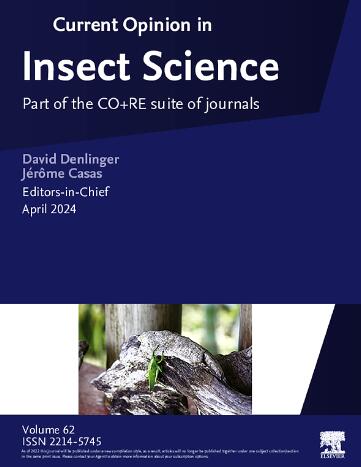果蝇幼虫唾液腺,一个了解分泌器官发育和功能的简单而优雅的模型系统。
IF 4.8
1区 农林科学
Q1 BIOLOGY
引用次数: 0
摘要
长期以来,了解细胞是如何被指定并随后经历构建功能器官所需的形态和生理特化的,一直是发育生物学研究的目标。果蝇唾液腺是一个专门用于分泌的简单上皮管状器官,已被证明是理解复杂的器官发生过程是如何精心安排的一个很好的模型。转录因子(TFs)和信号通路决定发育中的胚胎唾液腺(SGs)形成的位置以及每种特化细胞类型的细胞数量已经被发现。早期表达的下游SG tf已被证明可以调节自身和彼此的表达,并激活与管形态发生机械力和/或分泌功能直接相关的下游靶基因。事实上,最近的发现表明,幼虫SG,长期以来被认为是一个很好的外分泌模型,也作为一个内分泌器官来支持动物的整体生长,并经历大量的大汗液分泌作为其最终行为,以保护发育中的蛹免受微生物感染。本文章由计算机程序翻译,如有差异,请以英文原文为准。
The Drosophila larval salivary gland, a simple and elegant model system to understand secretory organ development and function
Understanding how cells are specified and subsequently undergo the morphological and physiological specializations required to build functional organs has long been a goal of developmental biology studies. The Drosophila salivary gland (SG), a simple epithelial tubular organ specialized for secretion, has proven an excellent model for understanding how the complex process of organogenesis is orchestrated. The transcription factors (TFs) and signaling pathways that determine where in the developing embryo SGs form and how many cells contribute to each of the specialized cell types have been discovered. The early-expressed downstream SG TFs have been shown to regulate their own and each other’s expression and to also activate downstream target genes directly linked to the mechanical forces of tube morphogenesis and/or to secretory function. Indeed, recent discoveries reveal that the larval SG, long considered an excellent model for exocrine secretion, also functions as an endocrine organ to support overall animal growth, and undergoes massive apocrine secretion as its final act to protect the developing pupa from microbial infection.
求助全文
通过发布文献求助,成功后即可免费获取论文全文。
去求助
来源期刊

Current opinion in insect science
BIOLOGYECOLOGYENTOMOLOGY-ECOLOGY
CiteScore
10.40
自引率
1.90%
发文量
113
期刊介绍:
Current Opinion in Insect Science is a new systematic review journal that aims to provide specialists with a unique and educational platform to keep up–to–date with the expanding volume of information published in the field of Insect Science. As this is such a broad discipline, we have determined themed sections each of which is reviewed once a year.
The following 11 areas are covered by Current Opinion in Insect Science.
-Ecology
-Insect genomics
-Global Change Biology
-Molecular Physiology (Including Immunity)
-Pests and Resistance
-Parasites, Parasitoids and Biological Control
-Behavioural Ecology
-Development and Regulation
-Social Insects
-Neuroscience
-Vectors and Medical and Veterinary Entomology
There is also a section that changes every year to reflect hot topics in the field.
Section Editors, who are major authorities in their area, are appointed by the Editors of the journal. They divide their section into a number of topics, ensuring that the field is comprehensively covered and that all issues of current importance are emphasized. Section Editors commission articles from leading scientists on each topic that they have selected and the commissioned authors write short review articles in which they present recent developments in their subject, emphasizing the aspects that, in their opinion, are most important. In addition, they provide short annotations to the papers that they consider to be most interesting from all those published in their topic over the previous year.
 求助内容:
求助内容: 应助结果提醒方式:
应助结果提醒方式:


